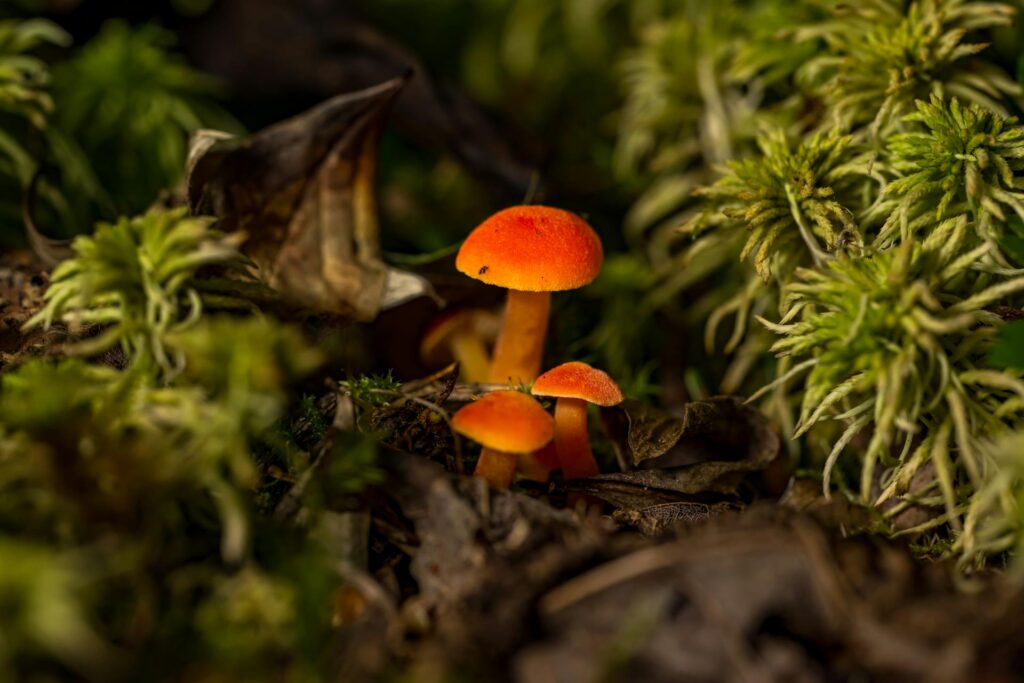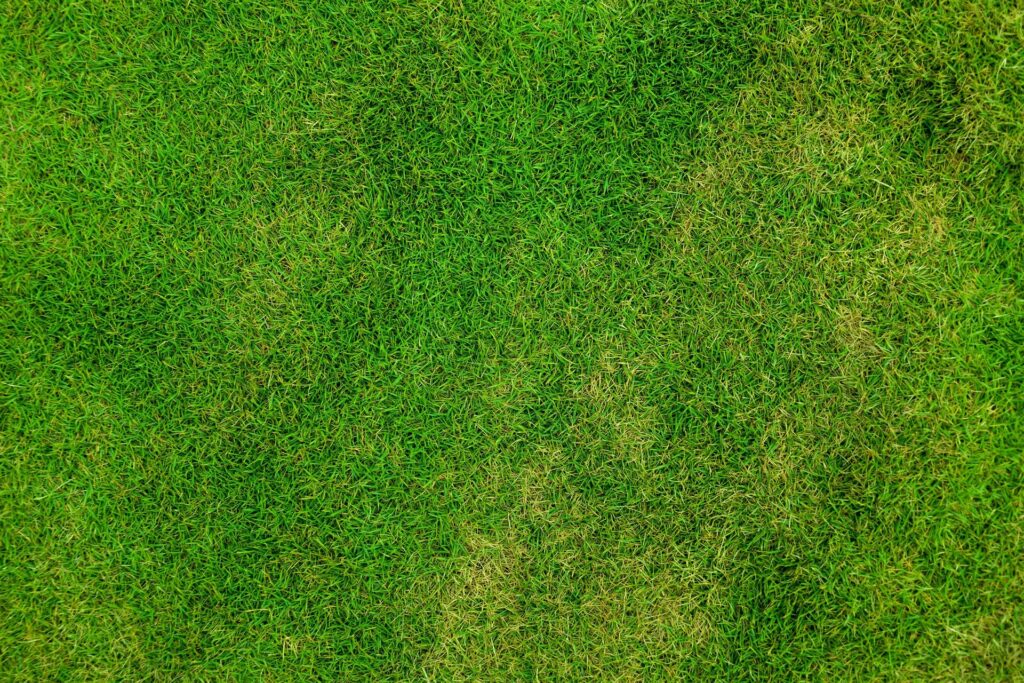Find Out What You Should Do When Rain Creates Grass Fungus
Let us guess. The recent wet weather created strange yellow patches or weird, fuzzy spots in your yard. What gives? You’ve probably got a case (or five) of lawn fungus.
A mix of humidity, sudden temperature swings, and unpredictable rainfall make Ohio and Michigan prime spots for grass fungus. But don’t panic! Most lawn diseases are treatable if you catch them early. Let’s break down what causes them, how to spot them, and the best ways to fight back.
What Causes Lawn Fungus in Ohio & Michigan?
Lawn fungus doesn’t just show up out of spite. It thrives under specific conditions, and sometimes, Mother Nature is the real enemy. Here’s what gives fungi the upper hand.
- Too much moisture: Spores thrive in soggy areas caused by overwatering, inadequate drainage, or heavy rainfall.
- Thatch buildup: A thick layer of dead grass essentially spreads disease by retaining moisture and obstructing airflow.
- Compacted soil prevents roots from breathing and causes water to pool rather than soak in if your lawn feels extremely hard.
- Unbalanced nutrient levels can cause grass to grow too quickly and weakly, while too little nitrogen makes it susceptible.
- Weather stress: Drought, heat waves, or sudden cold snaps weaken cool-season grasses, which makes them a prime target for opportunistic fungi.
How to Identify Lawn Fungus
Fungus doesn’t always announce itself with neon signs, but it does leave clues. Look for the following.
- Discolored patches: Rings of yellow, brown, or even pink.
- Unusual textures include thread-like growths, greasy-looking patches, or powdery coatings.
- Unrecoverable areas of grass: Fungi may be the cause if a patch of grass remains wilted despite watering.
Keep in mind that early morning is the best time to inspect your yard. Dew makes those fungal webs and spots more visible.

Common Types of Lawn Fungus
Brown Patch
- Looks like: Irregular brown circles, sometimes with a darker ring. Grass blades may look water-soaked at the edges.
- Loves: Overwatered lawns, high humidity, and temps above 80°F in the summer.
- Targets: Tall fescue, Kentucky bluegrass, ryegrass.
- Fight back: Cut back on watering, aerate, and apply fungicides if needed.
Dollar Spot
- Looks like: Small, silver-dollar-sized bleached spots.
- Loves: Low nitrogen, morning dew, and temps between 60-80°F from spring to fall.
- Targets: Bentgrass, Kentucky bluegrass, zoysia, and bermuda.
- Fight back: Fertilize properly, water deeply but less often, and use propiconazole for severe cases.
Red Thread
- Looks like: Pinkish-red strands clinging to grass tips.
- Loves: Cool, damp areas and nutrient-poor soil in the spring and fall.
- Targets: Kentucky bluegrass, perennial ryegrass, and fine fescue.
- Fight back: A light nitrogen boost can help.
Rust
- Looks like: Orange-red dust on grass blades that rubs off on shoes.
- Loves: Slow-growing, stressed grass in the spring and late summer/early fall.
- Targets: Kentucky bluegrass, perennial ryegrass, zoysia.
- Fight back: Mow regularly, fertilize lightly, and improve airflow to discourage spore buildup.
Fairy Ring
- Looks like: Dark green circles (or mushrooms) with dead grass inside.
- Loves: Dry, nitrogen-rich soil with buried organic matter.
- Targets: All grass types, but especially in older lawns.
- Fight back: Aerate, water deeply, and apply wetting agents to break up hydrophobic soil.
Summer Patch
- Looks like: Circular brown patches with healthy grass in the center.
- Loves: Hot, wet summers and compacted soil.
- Targets: Kentucky bluegrass, fine fescue.
- Fight back: Avoid high nitrogen in summer, aerate, and apply azoxystrobin preventatively.
Gray Snow Mold
- Looks like: Circular, matted grayish patches after snow melts.
- Loves: Long snow cover or wet fall conditions.
- Targets: Bentgrass, ryegrass, and fescues.
- Fight back: Rake matted grass in spring, avoid late fall nitrogen, and apply fungicide before first snow.
Pink Snow Mold
- Looks like: Pinkish-tinted patches (sometimes with cobweb-like growth).
- Loves: Cool, wet winters, even without heavy snow.
- Targets: Kentucky bluegrass, ryegrass, bentgrass.
- Fight back: Same as gray snow mold. Rake gently and avoid heavy fall fertilizing.
Powdery Mildew
- Looks like: White, powdery coating on grass blades (like flour dust).
- Loves: Shaded, humid areas with poor airflow in the spring and fall.
- Targets: Kentucky bluegrass, fine fescue.
- Fight back: Prune overhanging branches, improve sunlight, and spray neem oil for organic control.
Leaf Spot / Melting Out
- Looks like: Small dark spots on blades that grow into large dead patches.
- Loves: Overcrowded, wet grass in spring/fall.
- Targets: Kentucky bluegrass, perennial ryegrass.
- Fight back: Avoid evening watering, mow high, and use chlorothalonil if severe.
Necrotic Ring Spot
- Looks like: Dead grass ring with a green center.
- Loves: Drought-stressed lawns with poor soil in the summer.
- Targets: Kentucky bluegrass, fine fescue.
- Fight back: Aerate, water deeply, and use fungicides.
Gray Leaf Spot
- Looks like: Gray, oval lesions with yellow halos on blades.
- Loves: Hot, humid weather and over-fertilized grass.
- Targets: St. Augustinegrass, tall fescue, ryegrass.
- Fight back: Reduce nitrogen, improve drainage, and apply propiconazole if needed.
Pythium Blight
- Looks like: Greasy, water-soaked patches that spread fast in heat.
- Loves: Hot summer nights and overwatered lawns.
- Targets: Bentgrass, ryegrass, bluegrass.
- Fight back: Water in early morning only, avoid heavy traffic, and apply mefenoxam for severe cases.
Slime Mold
- Looks like: Yellow, gray, or purple slimy patches that dry into crusty powder.
- Loves: Decaying organic matter and damp conditions.
- Targets: All grasses. It’s harmless but ugly.
- Fight back: Just hose it off or rake it. No chemicals needed!
How to Treat Lawn Fungus in Michigan & Ohio
Adjust your watering. Water early in the morning so grass dries by nightfall. Deep, infrequent soakings beat daily sprinkles because they encourage roots to grow strong.
Improve airflow. Aerate compacted soil so roots and water can move freely. Dethatch if the layer is thicker than ½ inch.
Use fungicide wisely. Spot-treat first. Don’t just drench the whole lawn unless necessary. Also, rotate products on a month-by-month basis to prevent resistance.
Try some natural and organic lawn fungus treatments. For instance, neem oil works as a natural antifungal, and composted tea boosts healthy microbes that may outcompete fungi. You can also do a baking soda spray (1 tbsp per gallon of water) for mild cases.
How to Prevent Grass Fungus Long-Term
Want to stop fungus before it starts? A little routine care goes a long way.
- Mow high. Longer grass shades soil and resists disease better.
- Test your soil. Know what nutrients you’re working with.
- Overseed. Some grasses are just tougher and can better handle moisture.
- Aerate annually. This loosens the soil, creating airways and giving roots more room to grow.
- Clean your mower blades. Dirty blades spread spores like gossip.
- Compost. Organic materials give your grass a better microbial balance.

When to Call a Lawn Care Professional
Many times, DIY isn’t enough. If you live in Michigan or Ohio, there are several reasons to call the lawn care experts at NexGreen. For instance, if large sections of the grass fungus keep coming back despite treatment.
Or you aren’t 100% sure what you’re dealing with. Maybe it’s grubs or something else. We can easily diagnose the problem.
Also, certain stronger fungicide formulas require a license to use. Our technicians can handle some sprays that normal homeowners can’t get their hands on.
FAQs About Lawn Fungus
Will lawn fungus go away on its own?
Sometimes, if conditions improve (less moisture, better airflow). But often, it needs a nudge.
Can I walk on grass with fungus?
Try not to for several hours up to a couple days. You might spread spores to healthy areas.
Can I treat it without chemicals?
Natural options can be productive, but chemical lawn fungus treatments are often more effective and long-lasting.
How do I know if it’s fungus or drought?
Typically, fungus usually has distinct patterns (rings, spots). Drought damage is more uniform.
Fight the Lawn Fungus In Your Neighborhood
Fungus happens, but with the right know-how, your yard can bounce back stronger. Pay attention, act early, and defend against it with a thick, well-cared-for turf. Want the best lawn care possible? Contact the pros at NexGreen.
We offer lawn care services in Ohio communities around the areas of Westerville, OH and Columbus, OH.
We also provide pest control and lawn care services in Michigan for areas near Sterling Heights, MI and Rochester Mills, MI.
No matter your location, in Ohio or Michigan, we offer customized plans to keep your lawn green year-round. Call us now!

